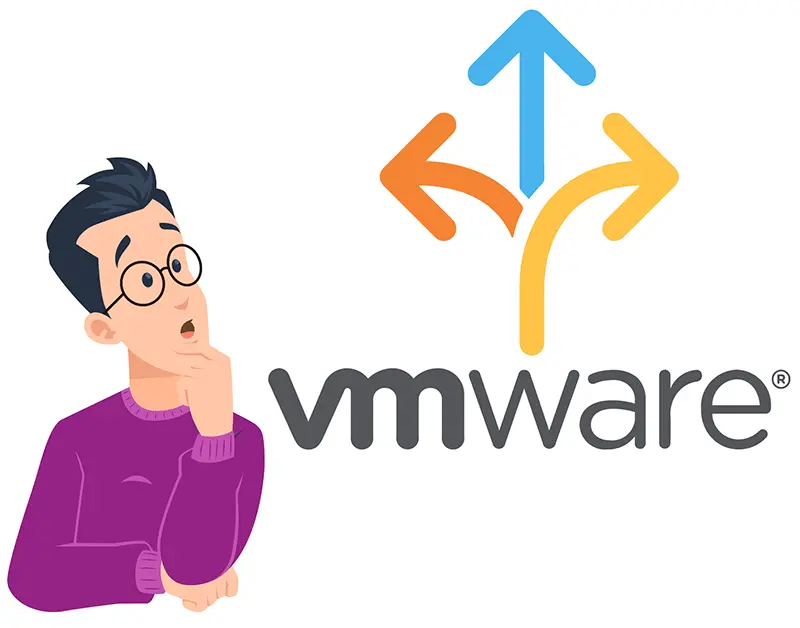
Navigating change: strategies for enterprises in the wake of Broadcom's VMware overhaul
Broadcom’s comprehensive overhaul of VMware following the acquisition is now fully revealed, encompassing new branding, market strategies, pricing structures, and partnerships. This situation raises a critical question for enterprises significantly affected by these changes: what steps should they take next?
NetApp’s Chief Technology Evangelist Matt Watts emphasized that enterprise and IT teams should pause and carefully assess the situation before making substantial decisions.
In an interview with SDxCentral, Matt Watts conveyed that many people are experiencing shock regarding the anticipated cost rise. Reflecting on discussions from a couple of months ago, he acknowledged that it is easy for individuals to become very emotional, which he understands. However, he pointed out that emotional decisions are often not the best.
Considering these factors, Watts highlighted four steps enterprises can take to navigate the next phase.
Firstly, for companies heavily reliant on VMware, abandoning it altogether would be too disruptive. These enterprises should first understand their VMware environment, mainly focusing on “wastage.” Watts noted the irony in this exercise, given that VMware was initially established to reduce data center waste and increase utilization.
Watts mentioned that VMware had initially been very successful in its goal. However, many companies began creating virtual machines for specific purposes without cleaning them up afterward, leading to numerous orphaned environments. He noted that many virtual machines are consuming more resources than necessary. Therefore, he suggested that it is essential for those deciding to stay with VMware to take stock of their current environment and identify opportunities to reduce costs.
Additionally, Watts mentioned that this evaluation should extend to data storage needs and usage. He pointed out that most data stored by an enterprise is never utilized, presenting an opportunity to reduce ongoing storage costs.
An open hypervisor strategy
Organizations should also reevaluate their hypervisor strategy, which, according to Watts, should be a more straightforward decision given the numerous available options. He highlighted choices such as Hyper-V, which “is back on the technology roadmap for many,” the Linux kernel-based virtual machine (KVM), Proxmox, and Oracle. The key consideration, he emphasized, is selecting a hypervisor that offers greater flexibility for future needs.
Watts observed that VMware had become the predominant hypervisor. He noted that organizations locked themselves into using VMware and began adopting technologies like VXrail as an HCI platform. This, he explained, resulted in a situation where organizations were locked into both the hypervisor and the physical architecture they were running.
Bruce Kornfeld, Chief Marketing and Product Officer at StorMagic, reiterated this recommendation in a recent interview with SDxCentral. He mentioned that many organizations he has worked with are considering open-source hypervisors like KVM.
Kornfeld added that while no one is immediately abandoning VMware in favor of KVM, there is growing interest. He mentioned they are conducting presentations and demos to show customers that KVM is a viable alternative. Ultimately, organizations must determine if they have the personnel and resources to manage the transition.
Move to the cloud
Watts advised organizations to consider what aspects of their VMware-managed on-premises environments could be migrated to the cloud. He noted that the cost-effectiveness of this move would depend on specific workloads.
He suggested exploring options like running VMware in Amazon, Microsoft, or Google, which could offset some of the cost increases associated with on-premises environments. This could be particularly relevant for disaster recovery applications, as using VMware site recovery tools can be expensive.
Broadcom has recently secured deals with significant hyperscalers to facilitate data transition from on-premises VMware environments to VMware environments in the public cloud. The first agreement was with Google Cloud Platform (GCP), and Broadcom CEO Hock Tan expressed expectations for similar support from other partners and hyperscale clouds.
Reevaluating HCI
A final consideration for organizations is their plans for hyper-converged infrastructure (HCI). HCI integrates compute, network, and storage functions into a software-defined package, providing smaller, more flexible building blocks for enhanced customization.
While this architecture has greatly benefited organizations by supporting consolidated virtual environments for various workloads, emerging smaller application types that depend on advanced analytics and artificial intelligence may expose potential limitations in HCI platforms.
Watts did not imply that HCI is obsolete. However, he raised questions about whether converged infrastructure, with its greater scalability in performance and capacity and the ability to scale components independently, might offer advantages. He suggested that such architectures could support traditional workloads using other virtualization providers and newer, more modern workloads.
These reflections tie into the implications of Broadcom’s recent changes to VMware for organizations.
Concluding his thoughts, Watts remarked that this situation presents an opportunity, albeit one driven by disruption. He believed that once emotions settle and organizations begin strategizing for life with or without VMware, it could unveil opportunities for enhancing business and IT capabilities. He acknowledged the discomfort and disruption but remained optimistic that this could lead to a path forward.
CISPE issues a red alert to Broadcom over VMware changes. Learn what it means for your cloud migration and how Hystax can help you stay flexible →
Why not use Hystax Acura Cloud Migration software from any source site to any target platform? This is especially true for migrating securely and cost-effectively from VMware to OpenStack due to the flexibility and freedom of any vendor lock-in that OpenStack offers. See the Hystax Acura cloud migration demo for more details. Feel free to contact us to learn more about our special VMware migration package.